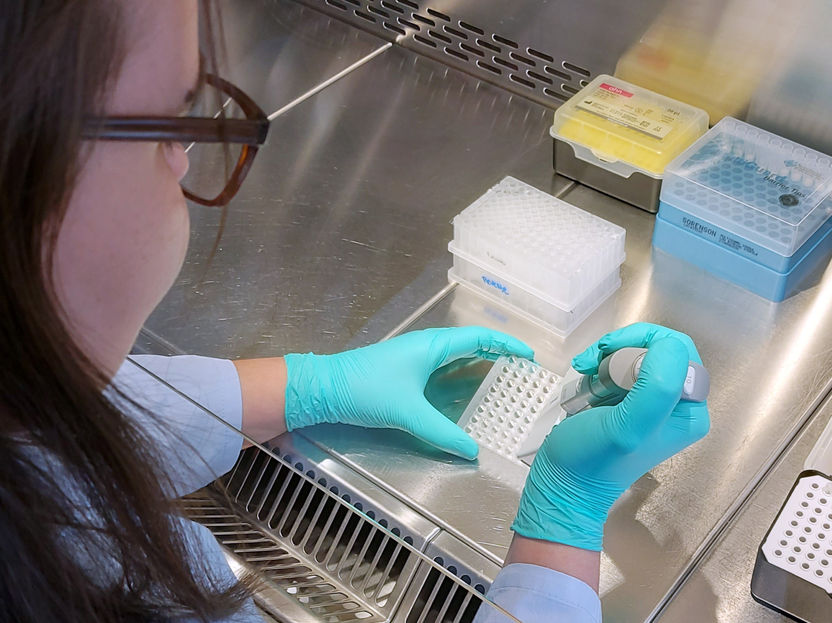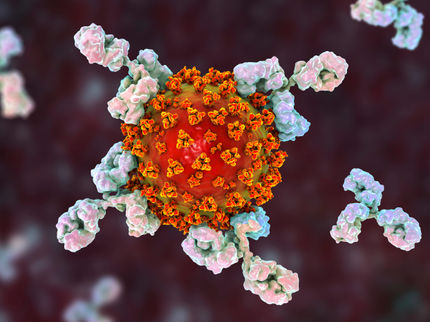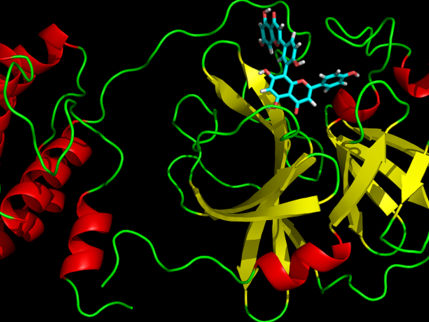Immune cells discovered in the lungs improve virus defense
Discovery could yield approaches to developing longer-lasting vaccinations against quickly-mutating viruses
A research team at the University of Basel has discovered immune cells resident in the lungs that persist long after a bout of flu. Experiments with mice have shown that these helper cells improve the immune response to reinfection by a different strain of the flu virus. The discovery could yield approaches to developing longer-lasting vaccinations against quickly-mutating viruses.

After recovering from the flu, certain immune cells in the lungs help ward off re-infection with similar influenza viruses.
Photo by David Mao on Unsplash
At the start of the coronavirus pandemic, some already began to raise the question of how long immunity lasts after weathering SARS-CoV-2. The same question has now arisen regarding the Covid-19 vaccination. A key role is played by immunological memory – a complex interplay of immune cells, antibodies and signaling molecules that allows the body to fight off known pathogens very efficiently.
Researchers led by Professor Carolyn King from the University of Basel’s Department of Biomedicine have now identified a diverse group of immune cells in the lungs that are key to the defense against reinfection by flu viruses. The same could be true of reinfection by other pathogens that cause respiratory diseases.
In experiments with mice, the researchers characterized a group of memory T cells in lung tissue that remain for a long time after a bout of flu. The team reports on these “T resident helper cells” in the peer-reviewed journal Science Immunology.
Reservoir inside tissue
“Relatively little is known about memory T cells that remain in tissue,” explained Nivedya Swarnalekha, co-first author of the study. Previous studies have focused on memory cells in blood and lymphatic tissue. “But it makes sense that the body keeps a reservoir of these cells in the tissues affected by the infection, where the same or similar pathogens could invade again.”
In their study, the researchers describe two types of T helper cells in the lungs. One type releases signaling substances in case of reinfection to equip other immune cells with deadlier “weapons” in the fight against the pathogen. The other type, previously characterized primarily in lymphatic tissue and thought to be absent in lung tissue, assists antibody-producing immune cells (B cells) and localizes closely with them in the lung.
The researchers were able to show that the presence of these cells in the direct proximity of the antibody-producing B cells led to a more efficient immune response against a different flu virus.
Starting point for long-term vaccine protection
“These T helper cells could be an interesting starting point for longer-lasting flu vaccinations,” says David Schreiner, the other co-first author of the study, adding that it might be possible, for example, to supplement vaccines with agents that promote the formation of these T helper cells which migrate into the tissue. To that end, further research and development are needed.
Original publication
Original publication
Nivedya Swarnalekha, David Schreiner, Ludivine C Litzler, Saadia Iftikhar, Daniel Kirchmeier, Marco Künzli, Young Min Son, Jie Sun, Etori Aguiar Moreira, Carolyn G King; "T resident helper cells promote humoral responses in the lung"; Science Immunology; 2021
Topics
Organizations
Other news from the department science

Get the life science industry in your inbox
By submitting this form you agree that LUMITOS AG will send you the newsletter(s) selected above by email. Your data will not be passed on to third parties. Your data will be stored and processed in accordance with our data protection regulations. LUMITOS may contact you by email for the purpose of advertising or market and opinion surveys. You can revoke your consent at any time without giving reasons to LUMITOS AG, Ernst-Augustin-Str. 2, 12489 Berlin, Germany or by e-mail at revoke@lumitos.com with effect for the future. In addition, each email contains a link to unsubscribe from the corresponding newsletter.
More news from our other portals
Last viewed contents

Innovative microscopy technique reveals secrets of lipid synthesis inside cells - Two-color infrared photothermal microscopy (2C-IPM) opens new avenues for long-term study of lipid metabolism in living cells
Founder and CEO of German BRAIN AG, Dr. Holger Zinke, is awarded with the ”Deutschen Umweltpreis 2008“ - German biotech company pacemaker for sustainability
A ranking of environmental chemicals






















































